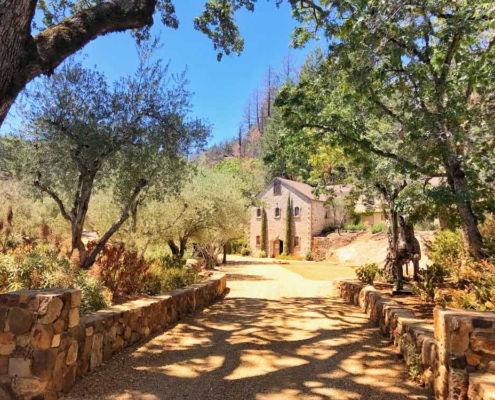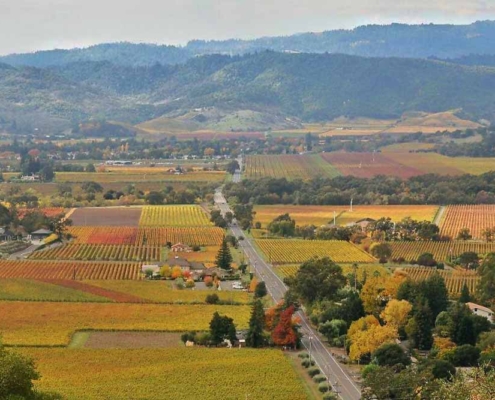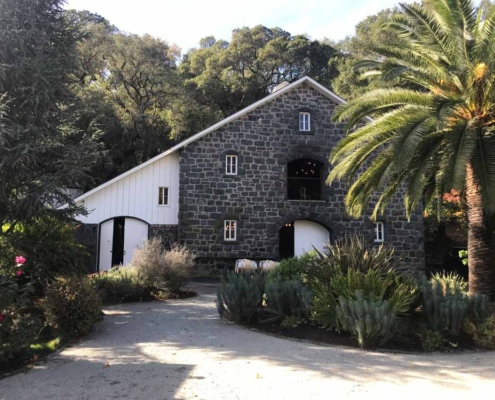Contact Us:
Phone: (415) 310-9598
Email: max@maxnapatours.com
TCP-38356
Shipping Wine
Although we cannot ship your wine for you, we can take you to a shipping store at the end of the day. We can also assist you in getting a wine shipping box. Most hotels in San Francisco and especially in Wine Country can ship wine as well.
Ten Reasons to take this Private Napa Tour
- See the best of Wine Country. Visit small family-owned wineries and/or iconic wineries with beautiful landscaped grounds. Many have vineyards, caves and private redwood groves.
- Travel in luxury SUVs with your intimate groups of 6 people or less. All guides are Sommeliers and happy to provide education and the lay of the land.
- Go where the buses, and even the vans, can’t – many of the best wineries don’t show up on maps or on travel sites. Many don’t even have signs. Experience scenic backroads perfect for photos.
- Taste exceptional small-lot handcrafted wines – absolutely the finest wines in America.
- Learn directly from the winery owners and vintners.
- See or hear first-hand everything that goes into the making of a bottle of wine.
- Customize your tour according to wine sub-region, Rutherford, Stags Leap, Howell Mountain, etc.) or grape type (Pinot Noir, Chardonnay, Cabernet Sauvignon, etc.) or experience (vineyard walk, food pairing, etc…).
- Request specific wineries – go wherever you want!
- Although we cannot ship your wine for you, we can take you to a shipping store at the end of the day. We can also assist you in getting a wine shipping box. Most hotels in Wine Country can ship wine as well. In the three summer months, wine needs to be shipped via air.
- We know you work hard – you deserve it. Our groups consistently have the most fun of any tour company.
Visit Hidden Gem “By Appointment Only” Vineyards
Taste and buy wines not sold on grocery store shelves at wineries that don’t exist on maps or in travel guides.
Our Private Napa Tours are Hand-tailored to Your Tastes
We have relationships with hundreds of different wineries, and winemakers will greet you as friends! You can choose some, or all, of the wineries to visit. Or you can simply state what type of wine you prefer, which wine region to explore, or whatever else piques your interest.
Our Tours Deliver Quality, Beauty, Service
Wineries are chosen based on the quality of wines poured, beauty of the landscape, level of service, and overall experience. Each winery we visit will be the new highlight of the day!
Whether you are a seasoned wine enthusiast searching for a specific varietal or simply looking to spend a truly enjoyable day in wine country, we will work with you to create the perfect day.
Travel in Style
Tours are done in Ford Expeditions EL’s, complete with comfortable leather seating for six, rear climate control, privacy tinting, and bottled water.
“Walk amongst the deeply gnarled trunks and twisted branches of 100 year old vines, then experience wine deep within a cellar or cave, taken directly from the barrel by the wine-maker himself. Or perhaps sit on a mountain-top terrace with the entire valley before you as you are poured a winery’s most special wines”
We know you work hard – you deserve this. Our groups report consistently that we have the most enjoyable tours of any other tour company, and we welcome you to visit our TripAdvisor page
Imagine strolling through private vineyards away from the crowds, sampling hand-crafted wines made in small, personal batches that are only given to friends, family, and select buyers, and learning from winemakers everything they went though to create their art…
The Feel of Napa Valley and Its Wineries
 Ask someone to name a U.S. wine region, and chances are that they will probably name the Napa Valley. Napa was the birthplace of the modern American fine wine movement, and bottles grace wine store shelves and fancy restaurant menus alike.
Ask someone to name a U.S. wine region, and chances are that they will probably name the Napa Valley. Napa was the birthplace of the modern American fine wine movement, and bottles grace wine store shelves and fancy restaurant menus alike.
What most people don’t realize is how small Napa actually is, or that it only produces 4% of California’s wine.
The Valley is lined with both historic and modern wineries, and of all sizes. There are about 500 in all. Many are on the main drag of Highway 29 (or just 29 to the locals), and some are on the quieter Silverado Trail (The Trail). These two roads run parallel on either side of the Napa River, and one can expect traffic leaving at the end of the day, especially on the weekends and during harvest.
There are several cross streets connecting 29 and The Trail with old bridges spanning the river. It creates a grid resembling a ladder or railroad tracks. Some wineries are in the surrounding hills, neighborhoods, backroads, in town, you name it!
This might make it sound like all of Napa is built up, but it is far from the truth.
Napa was the first agricultural preserve in California and much land has been set aside and left untouched. There are ordinances against putting in new vineyards on hillsides, and constructing condos outside of city limits. The hills on both sides of the valley are natural, aside from old terraced vineyards from the last century.
The Napa Valley Wine Region
Napa Valley is a wine region, but is further broken up into 17 sub-regions, called American Viticultural Areas (AVAs) and we can visit any of them on the tour. They all look different and grow different grapes, which makes for a fun day. You may have heard of some of the more famous areas.
Napa Sub-Regions
Atlas Peak is a higher elevation valley east of Napa Valley. The temperature is cooler and the soils of volcanic origin.
Chiles Valley is also east of Napa Valley, which results in warmer days and cooler nights. It is also a windy area, known for producing red wines.
Coombsville adjoins Napa City and is more densely populated. Vineyards are all small and can grow Chardonnay and Pinot Noir, as well as Merlot and Cabernet Sauvignon.
Crystal Springs is the newest AVA, created in 2024. It has no flat ground and vineyards all face either west or south for maximum solar radiation.
Diamond Mountain is located at the northwestern corner of Napa County, near Calistoga. Vineyards are mostly east facing, and are in partial shade during the hottest part of the day. Wines often exhibit a distinct minerality to them.
Howell Mountain on average, produces the most powerful and concentrated Cabernet in Napa, and maybe the world. It is rugged terrain but worth the trip.
Los Carneros consists of grassy rolling hills with a view of San Francisco. Fog keeps the summer temperatures down, and the area is most known for Pinot Noir and Chardonnay.
Mount Veeder is a part of the Mayacamas range that separates Napa Valley from Sonoma Valley. It is a thickly forested cold mountain. Wines are high in acidity and tannin and are the most age worthy.
Oak Knoll is a mostly flat area located just north of Napa City. The climate transitions from cool to moderate here, producing riper white wines and reds with more acidity.
Oakville is a major area for Cabernet Sauvignon and many of the most recognized wineries are located here. Cabernet from Oakville is fruitier than anywhere else in the valley.
Rutherford is located in the center of the Valley and noted for its Cabernet Sauvignon. It is said to contain Rutherford Dust, giving Cabernets a dusty finish. It also produces excellent Sauvignon Blanc.
Spring Mountain is located in the Mayacamas Mountain range, separating Napa from Sonoma Valley. Soils are more clay with nice morning sun. The area is most famous for Merlot, but produces many other varietals. Thick pine tree forests cover most of the area, but there are several beautiful views into the valley as well.
St Helena is a charming town but also an important AVA. It is located at the narrowest part of Napa Valley. Summer temperatures here tend to run the hottest, producing wines that are rich in flavor.
Stags Leap is located on rocky cliffs in the east part of the valley, and is another Cabernet Sauvignon area. Vines here take advantage of the late afternoon sun to produce round plush wines.
Wild Horse Valley is a cold high elevation region located east of Coombsville. Few wines are made here, but Chardonnay and Pinot are standouts.
Yountville is about a third of the way up Napa Valley and was the first to be planted to grapes in 1836. Wines from here are very elegant. The town of Yountville is charming and full of restaurants and hotels
Calistoga is located in the northern end of the Valley and has the warmest climates. The high cliffs of the Palisades and Mount St. Helena really make you feel that you are deep in a valley. The area is most known for producing Zinfandel and Petite Syrah.
Red Wines of Napa
80% of the wine produced in Napa is red and almost all is dry. Cabernet Sauvignon is the most planted, followed by Merlot, Cabernet Franc, Syrah, Zinfandel and Pinot Noir.
White Wines of Napa
Chardonnay and Sauvignon Blanc are the most seen white wines. Napa also has several old vineyards planted to less known varietals, such as Chenin Blanc, Albarino or Viognier.
Most wineries in Napa are only open by appointment, and more are becoming that way, especially since 2020. They offer seated guided tastings of their wines. This is great because you really get a chance to enjoy the wine without being interrupted, and gives the opportunity to ask all the questions you would like.
Appointment only wineries also afford extra education; you can ask to see the vines or the barrel room. These exclusive tastings are more costly but the pace is relaxed. Expect to pay up to $75 per person in tasting fees, although many will refund if some wine is purchased. You are also more than welcome to share tastings as a couple.
The Restaurants of Napa Valley

Then there are the restaurants! People who like good wine also like good food, and there is no shortage of Michelin Star and other highly rated places to eat. Many restaurants have their own vegetable gardens right outside the window and you can see the chef picking things you are about to taste. We will take care of reservations, although we are happy to take restaurant requests.
The Wine. You’ve Tasted, You’ve Purchased. Now What?
Now what to do with all this wine that I bought? There are many options available:
If you were to buy six or more bottles per winery, have them ship it.
Sometimes you can get free shipping or at least reduced pricing. Many people pick up a bottle or three at each winery and build a case in the car. At the end of the tour, we can stop at a shipper and you have it shipped home. Another option is to purchase a shipping box to take with you on your trip back. As it is over 3oz. of liquid, wine must be checked luggage which may or may not be included in your luggage.
If you have only have one or two bottles, they can be packed in your suitcase.
Another way to enjoy your wine is to bring it along with you to a restaurant, a great perk about dining in California. Most will charge a corkage fee, usually between $10 and $30 to have them open it for you. Typically, the more expensive the restaurant, the more expensive their fee will be.
If you book this tour at the beginning of your trip, you will have wine to drink for the rest of your vacation!
 As far as the weather is concerned, all four seasons are beautiful. Winter rains turn the Valley green between November and May, while the summer is the dry season and the grass is a golden color. Going wine tasting is a great activity on a rainy day, so don’t let this deter you. It is much better than trying to walk around town in the rain! It very rarely snows in Napa, and if it does, it usually melts by 10am.
As far as the weather is concerned, all four seasons are beautiful. Winter rains turn the Valley green between November and May, while the summer is the dry season and the grass is a golden color. Going wine tasting is a great activity on a rainy day, so don’t let this deter you. It is much better than trying to walk around town in the rain! It very rarely snows in Napa, and if it does, it usually melts by 10am.
Winter temperatures average 60 degrees Fahrenheit for the high, perfect for drinking red wines. Summer temperatures are typically in the high 80’s. Often the warmest time of the year is September and October, ensuring that the grapes will come in ripe. Expect temperatures up to 100 degrees if there is a heat wave, although there is low humidity. Daytime summer temperatures in Napa are usually 30 degrees warmer than San Francisco, so remember to dress in layers.
Our personal record is 106 degrees in Calistoga to 52 degrees on the Golden Gate Bridge an hour and a half later!
Thirsty, You Say?
No worries! In the back of all of our SUVs are large coolers. These are stocked with chilled water for you to drink. Hydration is key while drinking alcohol, and you should drink at least as much water as wine. If it is a hot day, you should drink even more water. Just reach back and grab a bottle of water, you don’t even need to ask. The restaurant in the middle of the day is often a good break to hydrate. Or have another glass of wine! These coolers will also keep your wine and food purchases refrigerated on the tour.
Many people snooze or “rest their eyes” on the way home after a day of tasting. We call this the Napa Nap, or the Sonoma Coma!





